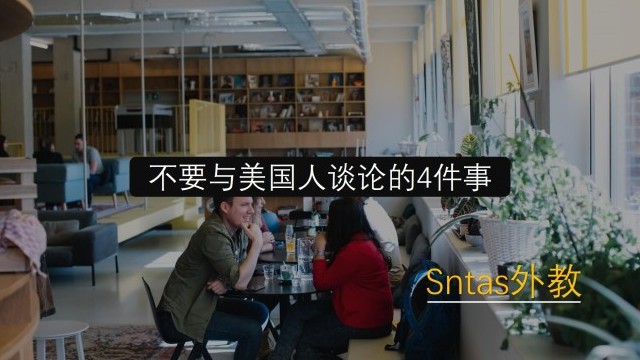沪江CCTalk云总裁陆坚专访:教学直播昙花一现还是潜力无限?
作者:Eva Xiao
来源:techinasia
2016-11-24 11:03
Interactivity is the lifeblood of live streaming. That’s what powers its monetization model in China, where audience members shower live streaming hosts with virtual gifts in exchange for attention and entertainment. Live streaming in the classroom, however, is a slightly different story.
网络直播的本质是互动交流。这是中国直播最主要的盈利模式。在直播中,粉丝向主播赠送虚拟礼物以求获得主播关注并(通过这个过程)得到消遣。然而,在教室里进行直播,则是另外一回事。
“In the past few months, there [have been] a lot of doubts about what kind of role live streaming can play in education,” says Lu Jian, president of CCTalk Cloud, the live streaming arm of Chinese education company Hujiang. “A lot of people […] think it’s a fad.”
CCTalk云是中国互联网教育公司沪江旗下的直播社群学习平台。CCTalk云总裁陆坚说:“在过去的几个月,人们对于直播在教育体系中所扮演的角色存在很多疑问,很多人……认为这只会是昙花一现”。
“However, I think it’s because of the misunderstanding of [how] live streaming for entertainment is different from live streaming for education,” he tells Tech in Asia.
“但是,我认为这主要是因为人们不太了解娱乐直播和教育直播之间的区别。”他告诉Tech in Asia的记者。
CCTalk is part of a growing number of live broadcasting services in China’s education industry. Similar to entertainment and ecommerce applications of live streaming, educational live streams open a real-time channel between a host and an audience, or – in education vernacular – a teacher and students.
中国教育行业中直播平台日益增多,CCTalk也是大军中的一员。和娱乐直播、电商直播一样,教育直播打造了观众和主播之间(站在教育的角度来说,是老师和学生之间)的实时互动平台。
The key difference, however, is in host and audience interactions. On CCTalk, for example, virtual gifting is not encouraged. Beautifying effects, such as filters that make your eyes bigger, are also non-existent. Instead, there are tools that are familiar to anyone who’s tried MOOCs like Coursera and Udemy.
但是,主播和观众之间的互动是最主要的区别。打个比方,在CCTalk上不鼓励送虚拟礼物。那些能使你眼睛变大的滤镜美颜等工具也不复存在。相反,上过MOOCs课程的人(例如Coursera 和Udemy的公开课)应该会比较熟悉CCTalk上的一些功能。
Teachers can share their screen with students and write on a virtual whiteboard. To prevent CCTalk students – as many as ten thousand in a single class – from drowning out their classmates or teacher, students have to ‘raise their hand’ to participate.
老师和学生共享一张屏幕,在虚拟的白板上书写。在CCTalk上,为了防止老师或学生被班级里上万同学淹没,学生们必须“举手提问”才能参与课堂活动。
Even though the classes are less polished – teachers can’t edit footage – live courses feel more authentic, says Lu Jian.
陆坚说,老师们不能剪辑视频,尽管这种上课方式少了很多修饰成分,但是课程直播能让人感觉更加真实。
“I think live courses […] are more popular because they are more similar to the experience of the classes that we all have experience with,” says Lu Jian. “The teacher is teaching on the stage [and] we can interact with him or her.”
“我认为直播课程…更受欢迎,因为它跟我们平时上课的体验差不多”陆坚表示。“老师站在讲台上授课,我们能跟他/她互动。”
The company plans to add more live interaction features in the future, such as pop quizzes and in-class vocabulary games. Because classes are live, interactions can be more dynamic, says Lu Jian.
他说:“未来沪江计划增加更多即时互动功能,比如随堂测试和课堂学词的游戏环节。因为课程是直播的,交流互动能活跃课堂气氛。”
Currently, Hujiang has over 10,000 individuals and organizations teaching classes on CCTalk. Though most classes are free, some teachers are making more than US$200 per class. Unlike Hujiang’s MOOC-like video classes – the company’s main revenue stream – CCTalk has no restrictions on content or teaching experience. Anyone can register as a teacher and start broadcasting live.
目前,沪江 CCTalk 直播平台已经吸引超过1万名老师和机构在此进行授课。尽管大多数的课程是免费的,但是还是有一些老师每堂课的收入超过200美元。沪江的MOOC类视频课程是公司的主要收入来源,和这些课程不同的是,CCTalk对内容和教学经验没有限制。每一个人都可以注册成为老师,然后开始直播教学。
MOOC+?
Hujiang is not the only company implementing live classes. Larger players, such as Tencent and YY, have their own live education platforms as well. Their product offering is almost identical – open platform, shared screen capabilities, education-specific interactions – which means content and reach will be key differentiating factors. No doubt each company has been able to leverage the hype around live streaming in China this year.
沪江不是唯一一个做课堂直播的公司。其它更大的公司,像腾讯和YY,也拥有自己的教育直播平台。他们提供的服务几乎一样——开放的平台、屏幕共享、教育行业特殊的互动功能,这就意味着内容和平台的传播度将会成为最关键的区别因素。毫无疑问,今年每个公司都能利用中国直播领域的热潮大肆宣传一番。
However, at the moment it’s not clear whether live classes offer anything new to the edutech industry. With virtual whiteboards and screen-shared powerpoint slides, they look very similar to traditional online courseware. Adobe Connect, for example, even has a little ‘hand raising’ button so students don’t talk over each other.
然而,目前尚不清楚课堂直播是否会给教育体系带来新的变化。在直播课堂上使用虚拟白板和屏幕上共享PPT,这些看起来和传统的在线课件相似。例如,Adobe Connect(全球知名的视频会议软件),甚至有一个小的“举手”按钮,以保证学生的讨论秩序。
Still, it’s worth noting that student attrition – the Achilles’ heel of MOOCs- might be mitigated if edutech companies can make live classes more engaging for students. For now, Hujiang will rely on external factors, such as acing the TOEFL to study or work abroad, to drive student motivation.
不过值得注意的是,如果教育公司能够让直播课程对学生产生更大的吸引力,那么学生流失(MOOCs课程的弊端)情况将得以改善。目前,沪江将依靠外部因素,比如通过托福考试出国学习或工作来提高学生的积极性。
“In our case […] most of the students have strong motivation,” says Lu Jian. “They are not studying for fun.”
“我们的情况是…大部分学生有很强的学习动机,”陆坚说。“他们不是为了好玩而学习。”
声明:本双语文章的中文翻译系沪江英语原创内容,转载请注明出处。中文翻译仅代表译者个人观点,仅供参考。如有不妥之处,欢迎指正。
- 相关热点:
- 七年级下册英语单词











